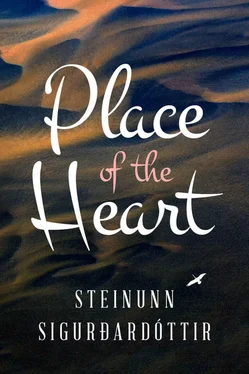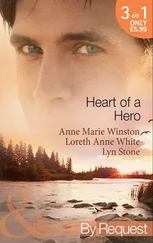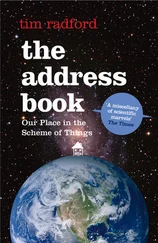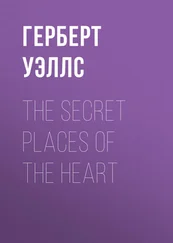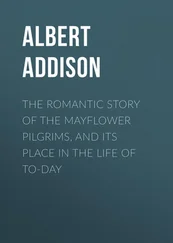Are you still working at the National Hospital? he asks me respectfully, if not a bit awkwardly.
Yes, I say, wanting to get out of this pointless conversation with this unostentatious, elegant man who’s filled his cart with gravlax, avocados, beef tenderloin, tonic water, lobster, Quality Street tins, fresh pineapple, cream, and ginger ale. I hope he’s too distracted to notice the oatmeal, margarine, dry yeast, onion, and chickpeas in my cart, besides the skim milk and those detestable dried apples.
Preparing a feast, are you? I say.
No, I — we’re going to our summer cottage.
Yes, and where’s that?
Out west in Mýrar.
I’ve never been there. I always go out east by the sea.
He asks me about the sea to the east.
I tell him all about Grandma’s and Mom’s French fishing boats, and Grandma’s Grove where everything grows, concluding with the family homestead of Andey, which has the dubious distinction of being the setting of the shortest Icelandic saga ever preserved, the Tale of Dittur of Andey , by no means a masterpiece.
I realize that I’ve been jabbering away, and say that hopefully he doesn’t have too many frozen items in his cart.
He says he hasn’t noticed any leaks.
We set off on our journey between the shelves, side by side, pushing two shopping carts that have merged into one double cart. We never slip up in our driving, gliding gracefully past islands of goods, and the wandering shadows of other customers shoot around the corners when the double cart comes sailing. It turns out that we’re on the same course, because he has forgotten several items and is taking a reverse route through the store, starting in the produce section. And we’re both in need of some of the same hygiene products, like toothpaste and cotton swabs. It’s a comical shopping trip with a gentleman whose name I don’t even know and who asks whether he might drive me home.
What type of car do you drive? I ask, and when he says a Range Rover, that’s good enough for me.
After a smooth drive, the supermarket man slips sideways through the front door of Bollagata, carrying my groceries. What a joke it would be if the bags got mixed up and he went home with my oatmeal and chickpeas, the provisions of a low-wage woman, instead of beef tenderloin and gravlax. I wonder if such a man has ever eaten oatmeal and dishes made with chickpeas.
My guest is polite and doesn’t rush straight in. He stops in the small hallway, pressed in by walls and doors and the radiator and shoes, and waits to be invited into the living room. The door to my bedroom was open, and he wasn’t ashamed to look that direction and take stock of the situation, as much as it was possible from the hallway. This he did unabashedly, with the same attentive regard he gave the side-view mirrors on our way to my place. Yes, the bed was made — nothing to complain about there. The black crocheted blanket is laid smooth and folded over the bed, and the shiny green rubber tree leaning over the headboard.
He gives me a straight look, having decided to set course into this bedroom, though not necessarily on this day. My expression is neutral as I glance back, pretending not to have any clue what he’s thinking.
He sits down in the main chair in the living room, the tapestry chair that Mom wanted me to have after she was gone. This nameless driver looks around the room, proudly, as if he’s personally accomplished something, and says: How pretty you’ve made everything. I wait for him to add: If I may say so myself.
Funny to hear the man praise my abode, because he surely must have something far more impressive than my excavated pit with tiny holes for windows. Except for the arched window, of course. But it was true that I’d tried to endow the place with life and color. Everything tidily arranged, nothing lying about, except for one of Edda’s dirty shirts on the back of a chair and my own raggedy slippers beneath the glass coffee table. These I hurriedly remove, before going to the kitchen to make coffee and put the milk and margarine in the fridge.
When I return, I see my dugout home in a new light: the blue walls, the white ceiling, the white lace curtains, and two diligent impatiens flowering white in the windows between all sorts of cacti. And in the corner, the masterpiece: an Easter cactus with a hundred light-violet flowers, on the old oval table from Mom, covered with the tablecloth that Aunt Dýrfinna eye-stitched, embroidered, and hemstitched in the Home Economics School at Eiðir half a century ago. I look at myself in the mirror in the golden frame, my face between the palm branch that is and the other that’s reflected, and am pleased to have put on the rosy sweater that I designed and knitted. No other garment of mine fits me as well, though it’s undeniably kitschy.
I secretly admire the man’s pale-green wool sweater, which goes perfectly with his eyes, not to mention his light-brown khakis and ochre boots. Visible above his shoes are the cuffs of his high-quality socks, in the same color as his pants. This isn’t one of those slick scented fellows. He’s simply attractive — and all the more attractive the closer you look. But I don’t know exactly what this is all about. We say nothing, two utterly relaxed perfect strangers.
The sand is far behind, buried, and forgotten, whether it’s rising or still, ahead of us “the manifold mountains of Síðufjöll,” as Jói called them. Modest willow stubs along the road are a comforting sight. They weren’t there just a few years ago. Some things do grow here entirely of their own accord. The vegetation recovers as the numbers of sheep are reduced. I want to live here after half a century, not earlier.
Then Mom and I could walk freely through the abundant trees. We could lie down when we felt like it and steal sheep to keep ourselves alive. Sheep thieves, eating ill-gotten shanks in radiant sunshine and viewing the glaciers from the opposite side, from poison-green hidden valleys. Then perhaps she’d finally tell me my story. It would be interesting to know, though I might hardly care by the time we got to that point.
The truth is that I want to cuddle up to Mom and listen to her heart as I did before I can remember. Her heartbeat must have been heavy and strange when she found out she was pregnant, with the risk that when the child was born it would look like I do.
Much of the good that happened is beyond your memory . You’re absolutely right, Eisa.
Don’t call me Eisa. You ruin everything when you do.
I want to ruin everything.
How did you become like that?
Like what? Dead?
Malicious.
But I’m not so bad that you wouldn’t want to join me as a ghost.
You really think that would work?
Who would we find to haunt?
Bimbirimbirimmbamm!
Ha ha.
Would we need to find someone?
Oh yes. Someone always needs to be found. I wouldn’t be wandering around if it weren’t for you, Eisa.
Say Harpa Eir.
Harpa Eir.
It’s so beautiful the closer we come to Kirkjubæjarklaustur that a wayfarer with any sense of shame might feel like covering his eyes or looking away, instead of taking in everything the eye desires. A great number of mossy pumice hills, for example, which make excellent elf-homes, stunning crags that the sea has licked full-length, blue rivers and white rapids in the lava. Systrastapi, the mossy rock formation, like a giant bone standing on end. The sublime blue of the volcanic neck Lómagnúpur silhouetted against the glacier.
For many hours the glacier lords it over the entire view from the Ring Road, dominating everything else. But it’s also of such a nature that it draws out the particular characteristics of whatever surrounds it, whether big or small. In its vicinity the sands deepen, the waters rise. It amplifies the impact of the fiery-yellow buttercups and violet-pink dwarf fireweed. It vivifies the colors and forms of the thickets. The majestic bastion of Lómagnúpur would be diminished on every side if it didn’t appear against the white giant. It’s as if the mountain would simply wither away if it weren’t in such close proximity to the glacier.
Читать дальше
